1
Fanatec Podium F1
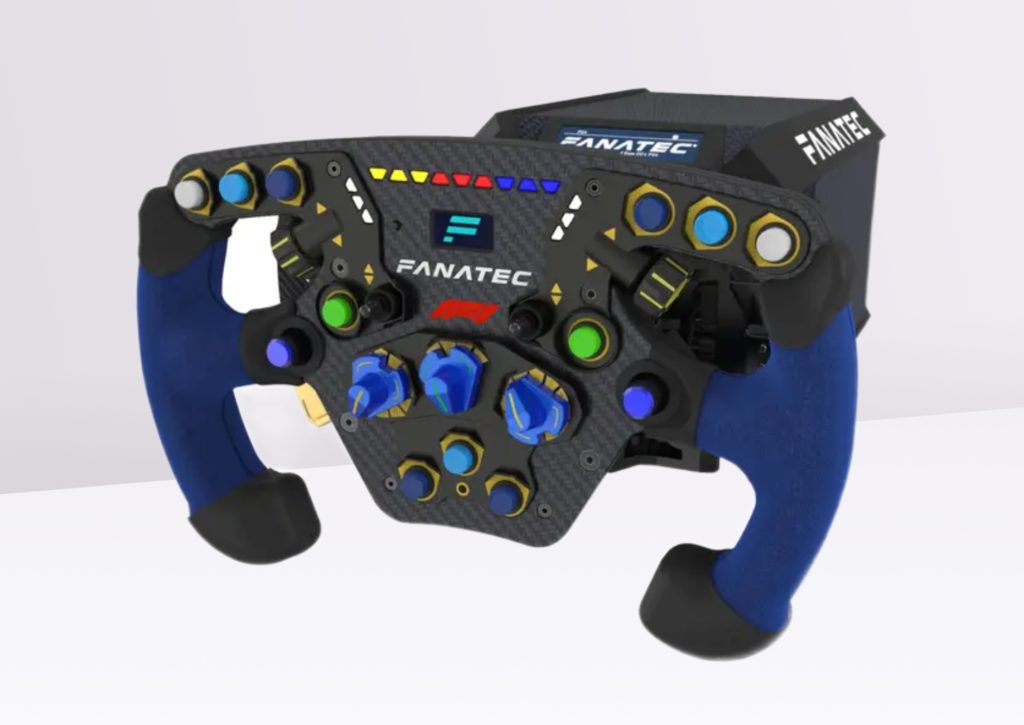
The best high-end steering wheel
Sim-racing is more than just a hobby. It has become a discipline in its own right, with worldwide e-sports competitions. What’s more, sim-racing is increasingly used in motorsports as a training tool for drivers. And for these two reasons, I believe that this discipline still has a bright future ahead of it.
To enjoy sim-racing to the full, you need a setup that includes at least 3 peripherals: a steering wheel, a base and a pedalboard. Without this trio, you might as well play with a joystick and say goodbye to immersion and sensations.
I’m not telling you anything new if I say that the steering wheel is the key element in a sim-racing setup, just as it is in a car. It’s with this peripheral that you feel everything the car does, your inputs, force feedback, vibrations when you brake too hard and so on.
Since the late 90s, sim-racing peripherals have come a long way, with more and more technologies being adopted to push realism even further. This discipline has always shone on the PC for a variety of reasons, such as the availability of quality peripherals, the enthusiasm of fans and the power offered by this platform. But things have started to change since the arrival of the PS3 and Xbox 360, the consoles that have most certainly revolutionized the world of video games.
In what follows, I’m going to introduce you to the best steering wheels available on the descendant of the Xbox 360, commonly known as the Xbox Series X. Before I do that, I’ll tell you about the different steering wheel ranges and then what to look for in a sim-racing steering wheel.
The best entry-level Xbox Series X wheels
The Fanatec CSL Elite McLaren GT3 V2
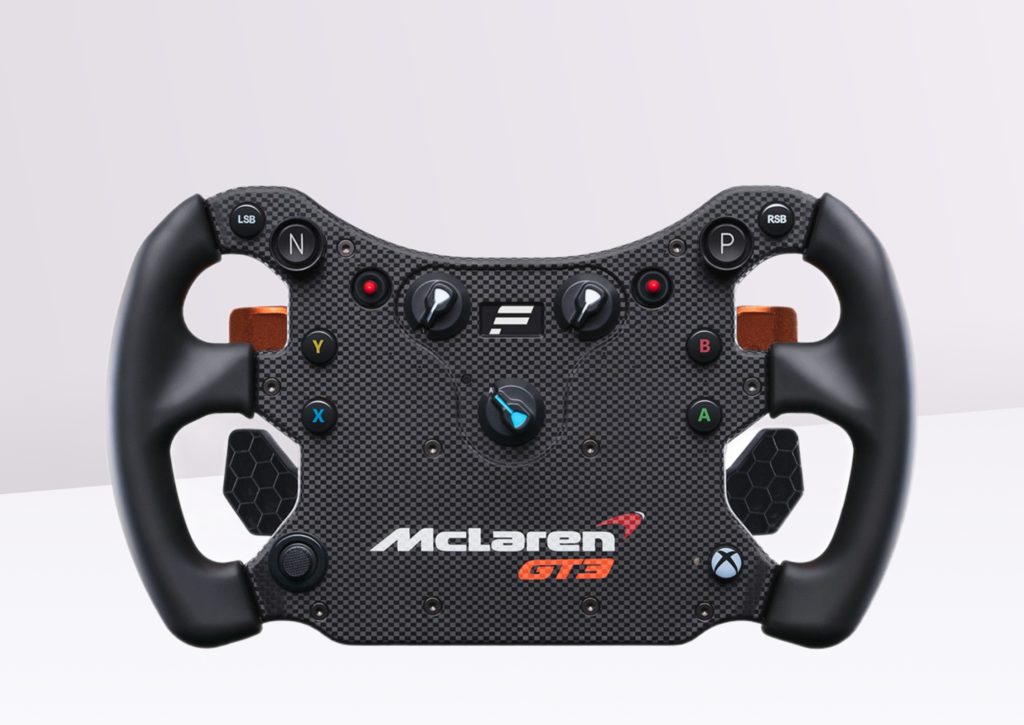
Advantages :
- Official McLaren license
- Good build quality
Disadvantages :
- Plastic Quick Release
I begin this ranking with a steering wheel that I consider to be the best in its range, the Fanatec CSL Elite McLaren GT3 V2. In fact, this steering wheel is sold on its own, without a base.
The CSL Elite McLaren GT3 V2 is an officially licensed McLaren GT3 carbon-fiber steering wheel. The build quality is sublime, worthy of the British supercar manufacturer. The wheel is 30 cm in diameter, but not round given the GT3 specification. On top, you’ll find 7 standard buttons, switches and 4 paddles.
The grip on this steering wheel is just right, with everything you need in the right place. You’ll find it easy to use this steering wheel for all types of sim-racing, whether GT or leisurely racing. The paddles are well positioned, and you can even shift gears with just one hand.
This steering wheel features a small, one-inch OLED display that serves to show data such as gear engaged. Also, the CSL Elite McLaren GT3 V2 is compatible with virtually all Fanatec bases, giving you a wide range of combos.
The only weak point of the CSL Elite McLaren GT3 V2 is its plastic Quick Release. Frankly, I can overlook this, as the price justifies the use of plastic. However, as you know, this QR has dead zones in the center and disconnects when you’re driving hard.
Priced at less than €200, this steering wheel remains a sim-racing must-have. Of course, you’ll need a matching base (at least €350), but your setup will fare much better with this premium peripheral from Fanatec.
Read my full review of the CSL Elite McLaren GT3 V2.
The Logitech G923
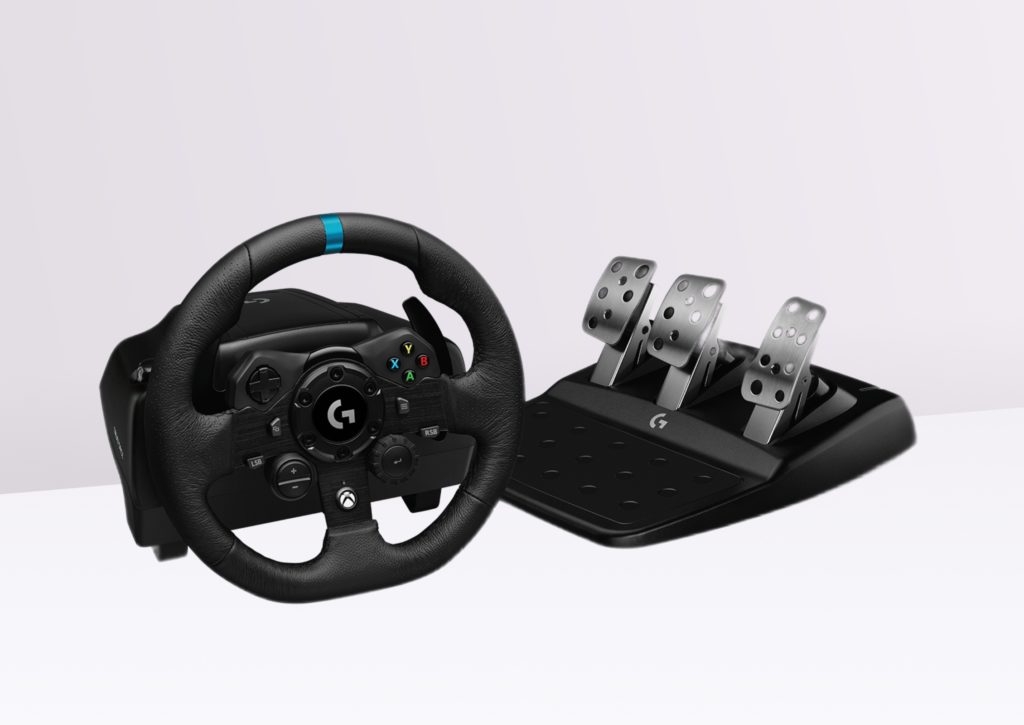
Advantages :
- Good build quality
- Complete bundle
- Good driving feel
Disadvantages :
- Return of force sometimes unclear
Logitech has been a household name in the game of sim-racing peripherals for over 20 years, and the G923 is one of the latest additions to its catalog.
So, this steering wheel is brand new, which is a good thing in absolute terms. I’m not going to lie to you, the G923 isn’t really a new steering wheel, but rather a major upgrade of the G920. This upgrade has brought its share of goodies, such as TrueForce, better build quality, improved console compatibility and so on.
The wheel is 28 cm in diameter and features some 15 buttons and 2 palettes. Logitech used aluminum for the wheel structure and leather for the contour. It looks good and feels great in the hand.
Speaking of grip, the ergonomics of this steering wheel are excellent. All the buttons are in the right place, as are the paddles, which are just the right size. The pedals supplied are of good quality, with a spring system for force feedback. It feels right and does the job.
The base uses two geared motors coupled with Logitech’s TrueForce technology. On paper, this technology connects directly to the game engine to retrieve data and adjust the force feedback. Sometimes it works well, sometimes it’s a blur. As far as I’m concerned, I prefer to disable TrueForce, as this technology is not yet perfected. I prefer to drive without it, because at least I know that the force feedback will always be linear, with no surprises.
Overall, this steering wheel is perfect for Xbox Series X sim-racing enthusiasts. Admittedly, it’s expensive (under €500), but at least you’ve got a recent, quality product and, above all, a bundle. In any case, I’d recommend it to all sim-racers, whether amateurs or beginners.
Read my full review of the Logitech G923.
The Moza R3
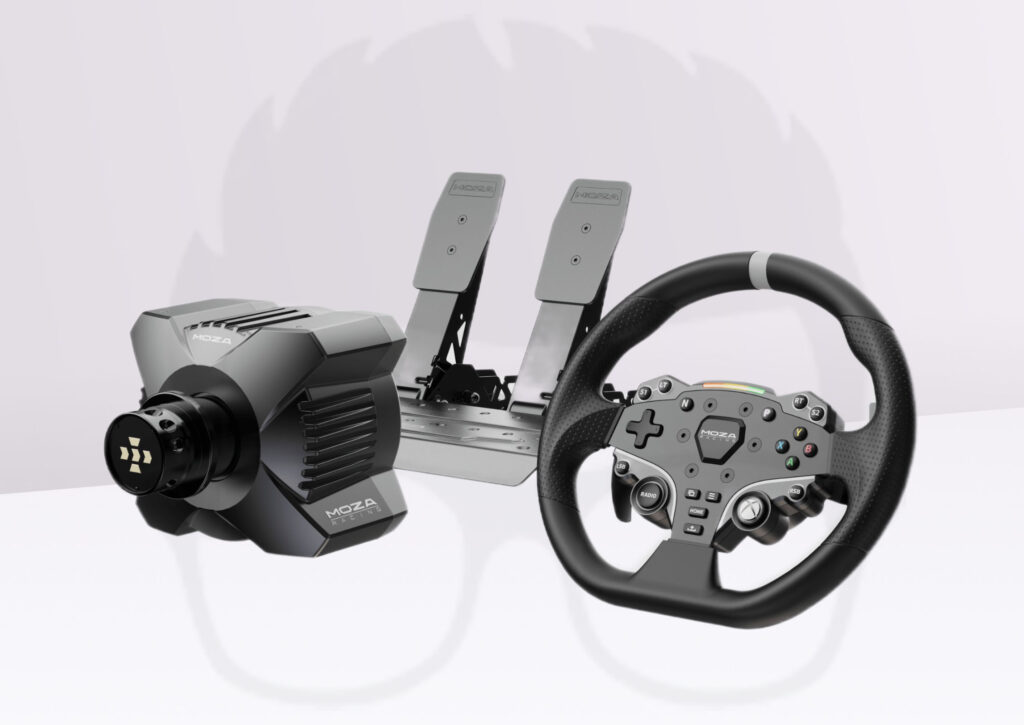
Announced with great fanfare a few months ago, the Moza R3 entry-level bundle, developed in partnership with Microsoft for Xbox Series X/S and PC, is finally being marketed by the Chinese brand!
The aim of this bundle was to compete with Fanatec and its dominance of consoles (Playstation and Xbox) with its CSL DD bases. As you know, manufacturers of sim-racing peripherals have to work closely with Sony and Microsoft to make their products compatible with consoles. Controllers (chips) must be installed on sim-racing peripherals to enable communication between them and consoles.
Obviously, if you’re new to the industry, as is the case with Moza, a brand that has only been active in sim-racing since 2021, the task looks daunting, to say the least. But Moza, in partnership with Microsoft, is looking to change the game on Xbox.
The R3 bundle includes a 3.9 nm torque Direct Drive base, an Xbox-specific steering wheel (with console buttons) and the standard SR-P Lite pedalboard. The R3 base follows the design of its big sister, the R5, but in a more compact format. Moza also supplies a Table Clamp with its bundle, enabling the base to be installed on any furniture in your home.
In terms of feel, the R3 offers a good reproduction of the effects of the sim-racing track in front of you, far better than those produced by Logitech G923s and Thrustmaster TXs, and not too expensive either (€450). This bundle is available from authorized Moza Racing distributors in France.
The best Xbox Series X mid-range steering wheels
Le Fanatec ClubSport Forza Motorsport
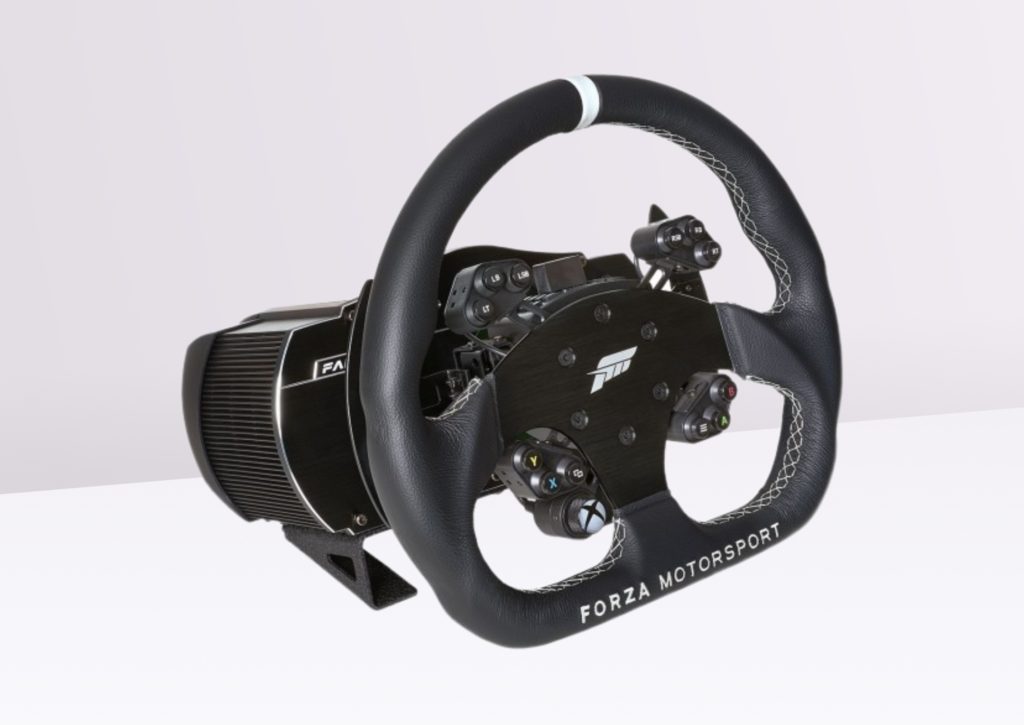
Advantages :
- Excellent build quality
- Official Forza license
Disadvantages :
- Premium prices
I don’t need to introduce you to the Forza license, which is certainly one of the most popular in the automotive world in video games on Xbox and PC, and Fanatec has partnered with it to offer us the Forza Motorsport ClubSport.
Part of Fanatec’s ClubSport range , this wheel is consistently mid-range. Build quality is excellent, with aluminum and leather used for the wheel. Speaking of the wheel, it’s 33 cm in diameter with a flat bottom, which is sure to please a lot of people.
The design of the ClubSport Forza Motorsport is both sublime and minimalist. There’s virtually nothing on the steering wheel except the Forza Motorsport lettering at the bottom and a banner at the top, as well as the franchise logo in the center. Simple, minimalist, perfect. The leather used is of good quality, as is the aluminum, which is anodized.
The grip on the Forza Motorsport ClubSport is also excellent, as the steering wheel is very similar in shape to that of a real car. There are 13 Xbox buttons on a hub, and 16 more above the hub, just behind the small screen.
In terms of feel, you won’t be disappointed, as the ClubSport Forza Motorsport uses a metal Quick Release that eliminates any dead zones or disconnections during hard use. Also, the paddles are large, click well and are very well placed. For the price, I only wish I’d had 4 instead of 2, but you can’t have everything.
Talking of price, this little gem retails for the princely sum of €500. At that price, all you get is the steering wheel and button hub. No base, no pedals. However, I’m a fan of this steering wheel and its excellent value for money.
The Thrustmaster TS-XW

Advantages :
- Bundle with base and steering wheel
- Powerful force feedback
Disadvantages :
- No Quick Release
Thrusmaster is a big name in sim-racing and simu in general, with high-quality, well-finished products, and the TS-XW is no exception.
Given the manufacturer’s ongoing collaboration with Sparco, the TS-XW is an official, scaled replica of the P310, and I love it. The wheel is 31 cm long, made of brushed aluminum and Alcantara all around. It’s beautiful, both to the touch and to the eye.
The design of the device is quite unique, as Peugeot is doing these days with its steering wheels: the TS-XW is oval and looks pretty good as far as I’m concerned. Even though I’m a conservative, I have to say I like the design of the TS-XW.
At the base of this flywheel is a powerful 40-watt brushless motor that delivers excellent force feedback with a maximum rotation angle of 1080°. The feel is excellent, with force feedback that’s both measured and precise. Although I personally prefer Direct Drive bases, I have to say that this one is an excellent alternative.
The TS-XW ‘s ergonomics are almost perfect, with 9 buttons, a D-Pad and palettes close to the hands. The only downside is that there are also buttons on the base, behind the steering wheel, and these aren’t really quickly accessible. I’d rather have them on the wheel than on the base.
Priced at less than €700, the TS-XW remains an excellent option for sim-racing at an affordable price. Its weak point is the absence of QR, and this won’t please everyone, but when you see that it has no real competition in terms of price, the TS-XW is a must-have.
The best top-of-the-range Xbox Series X steering wheels
The Logitech G Pro Wheel
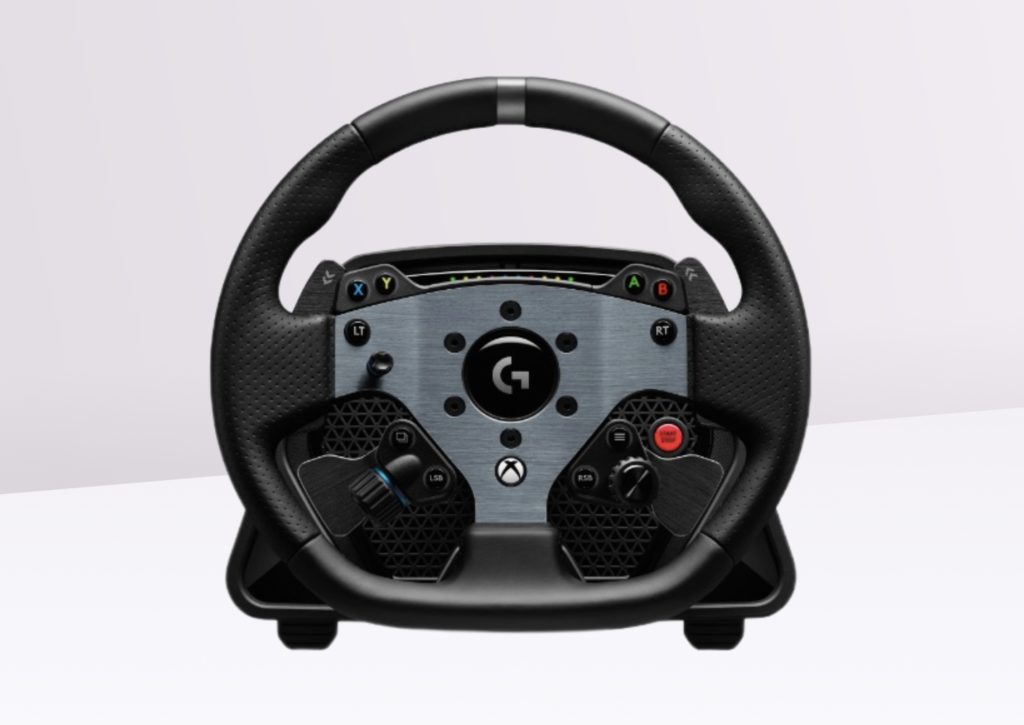
Advantages :
- Excellent build quality
- Direct Drive motor
- Quick Release
Disadvantages :
- Price a little high
- TrueForce not yet perfected
For a long time, Logitech hesitated to take the plunge and switch to Direct Drive. But better late than never. The G Pro Wheel is Logitech’ s first entry into the world of DD, and I must say it’s well executed.
The design of the G Pro Wheel is very attractive, with a solid yet premium construction. You’ve got aluminum and perforated leather on the wheel, giving it a distinctive look unlike any other wheel from the brand.
On the wheel, you’ll find 10 buttons, a D-Pad and switches, as well as 4 paddles for controlling your vehicle in any simus or racing game. The grip is excellent, worthy of the Swiss manufacturer. All buttons are easily accessible, without your hands leaving the steering wheel, and I love that.
The base is Logitech’ s first DD and develops a maximum torque of 11 nm. On the sim-racing market, this base is positioned between the Fanatec and Moza, right in the middle. In terms of feel, we’re well served, with force feedback that’s powerful, precise and above all reliable when TrueForce isn’t in use. If you activate this feature, it’s supposed to connect to the game engine to retrieve data and adjust the force feedback “On The Fly”. Except that in real life, it doesn’t work all the time, and sometimes there are blurbs.
Aiming for the top of the range, the G Pro Wheel comes at a premium price: €1,100. For this price, you get the 11 nm DD base and a steering wheel with QR. I like Logitech, but I think this product is poorly positioned in terms of price, especially as Direct Drive is a technology that the brand hasn’t mastered at all, as this is its first wheel to incorporate it.
The Fanatec Podium Racing Wheel F1

Advantages :
- Excellent build quality
- Use of carbon fiber
- Official F1 license
Disadvantages :
- Handling a little difficult
I’ll end with the best thing on the Xbox Series X, the Fanatec Podium Racing Wheel F1. The German brand has pulled out all the stops on this wheel for fans of sim-racing, and more specifically F1.
The wheel is 27 cm in diameter, uses carbon fiber and has a rotation angle of between 90 and 1080°. On it, there are 13 buttons, an OLED screen, switches and 6 paddles, 2 of which are analog. This steering wheel is a sim-racer’s paradise.
Sold as a bundle with the 25 nm max Podium DD base, this steering wheel is a killer. You’ve got power and precision in one package, so you can smash the clock in any racing game. And it’s compatible with Xbox Series X to boot.
The design is a little flashy I must admit, but it’s very well done. Carbon fiber for the structure and Alcantara for the cuffs. The shape won’t please everyone, as this steering wheel is typically F1 and could pose problems for other disciplines like rallying, for example.
It’s worth noting that you can configure everything with this steering wheel, from shifting gears to the aggressiveness of Launch Control, all via the screen and the device’s switches.
The base uses a DD motor that delivers up to 25 nm of torque. This is more than enough for sim-racing, as a fan or e-sport professional, or even as a race driver. The steering wheel is also equipped with motors for road feedback, such as vibrators, to increase the level of immersion.
In absolute terms, the Podium Racing Wheel F1 remains Fanatec’s best wheel if you can afford it. Priced at almost €1,800, it’s a very premium peripheral that will only find takers in a very specific fanbase, especially as it doesn’t take very long to get the hang of.
Read my full review of the Fanatec Podium Racing Wheel F1.
The different steering wheel ranges on Xbox Series X
As with virtually every product on the market, sim-racing wheels are offered in 3 main ranges: entry-level, mid-range and high-end. Each of the products in these ranges targets a different category of sim-racer, from beginner to amateur to fan/pro. As far as I’m concerned, this makes perfect sense, as manufacturers of sim-racing peripherals need to ensure a long life for their business.
Globally, 3 players share the Xbox Series X sim-racing wheel ranges: Logitech, Thrustmaster and Fanatec. There are other brands making peripherals, such as Moza or Simucube, but these focus on PCs, and are outside the scope of this article.
Entry-level steering wheels
As the saying goes: you have to start somewhere, and that’s why entry-level sim-racing wheels exist. These products are aimed primarily at the novice public looking to take their first step into this discipline, with, of course, inexpensive peripherals.
Typically, you’ll find bundles in this range that are good enough to get you started with sim-racing. The watchword here is compromise, whether between build quality, functionality or feel. This is reflected in the price of bundles, which is often between €200 and €300.
Mid-range steering wheels
We now move on to what I consider to be the most interesting segment, the mid-range. Here, you have steering wheels, or other peripherals, that are clearly better than those in the entry-level segment, and at prices that are relatively affordable.
The mid-range often incorporates racing-inspired technologies, with Direct Drive-based steering wheels, partnerships with carmakers such as Porsche and McLaren, and the massive adoption of high-quality materials.
As far as I’m concerned, if you want to improve your sim-racing setup, you need to shop this range.
High-end steering wheels
And now, the best products available on the market: high-end steering wheels. These peripherals make virtually no compromises, whether in terms of manufacturing quality, use of materials (carbon fiber, for example), functionality, technology or price.
This range is aimed at customers who are fans of sim-racing, but also at professional drivers who wish to train on PC or, in our case, consoles. Of course, as you can imagine, premium products come at a price, and you’ll need to spend between €1,000 and €2,000 to get access to a top-of-the-range steering wheel and base.
In fact, this segment is still dominated by the German brand Fanatec, and has been for a very long time. But things are beginning to change, especially with the arrival of Logitech‘s first high-end Direct Drive steering wheel, which we’ll look at below.
What should you look for on an Xbox Series X steering wheel?
As I often say, sim-racing is a rather unique discipline in terms of preference. What I prefer to have on a steering wheel is probably not the same for you or any other sim-racer, and that’s why the choice of a peripheral is quite subjective. However, a steering wheel, or any other peripheral, does need to have certain features in order to live up to our expectations. I’m going to tell you what I look for in a steering wheel in what follows.
- Angle of rotation. The angle of rotation is measured in degrees and indicates how much the steering wheel can turn on its axis. The rule to remember is that the greater the angle, the closer the sim-racing wheel is to its car counterpart, and therefore the greater the immersion. In my opinion, you need to look for steering wheels with at least 900° angle of rotation to get a good sim-racing experience and immersion.
- Solidity. Sim-racing steering wheels are manufactured in different qualities, often in correlation with the range. Good peripherals opt for solid materials, such as steel, aluminum, carbon fiber, sometimes for all that’s structural, sensitive and stressed, and so on. So, if you find a lot of plastic used, the steering wheel is not well made and will be fragile to use.
- Budget. As I said earlier, sim-racing wheels can cost between €300 and €2000. The best thing, in my opinion, is to set yourself a budget for the steering wheel and the other peripherals you’re going to have in your setup, and above all not to exceed it. Often, the budget goes hand in hand with the sim-racer’s level of immersion: an experienced person who spends several hours a week in the simu will invest more in his setup than a Sunday racer, and that’s logical.
- Return of force. A steering wheel’s force feedback is actually found in its base, and is a torque value produced by the engine. When you drive a car, you feel everything the front end does through the steering wheel. In sim-racing, it’s a technology that tends to reproduce the same thing. Today’s innovations include Direct Drive motors which produce a resistance commonly known as force feedback. You’ll find this on mid-range and top-of-the-range steering wheels, as it’s still a fairly expensive technology.
- Ergonomics. Not all steering wheels are the same, just like cars. As far as I’m concerned, I look for steering wheels that I feel comfortable driving with. I need to be able to reach all the buttons, switches, paddles and so on without too much effort, or without moving my hand from the wheel.
Which one to choose?
- Budget. Choose your steering wheel according to your budget. Don’t forget that a sim-racing setup includes steering wheel, base, pedals and monitor. I’ve shown you a number of different steering wheels to suit virtually every budget.
- Degree of immersion. Choose a steering wheel according to the degree of immersion you want. There’s no point in buying a top-of-the-range peripheral if you’re only sim-racing once a week, for example.
- Availability. Some brands, such as Logitech and Thrustmaster, are available almost everywhere in stores, unlike Fanatec, which only sells on its store. If you’re the kind of person who wants to see a steering wheel to test its grip before buying, you need to consider its availability.

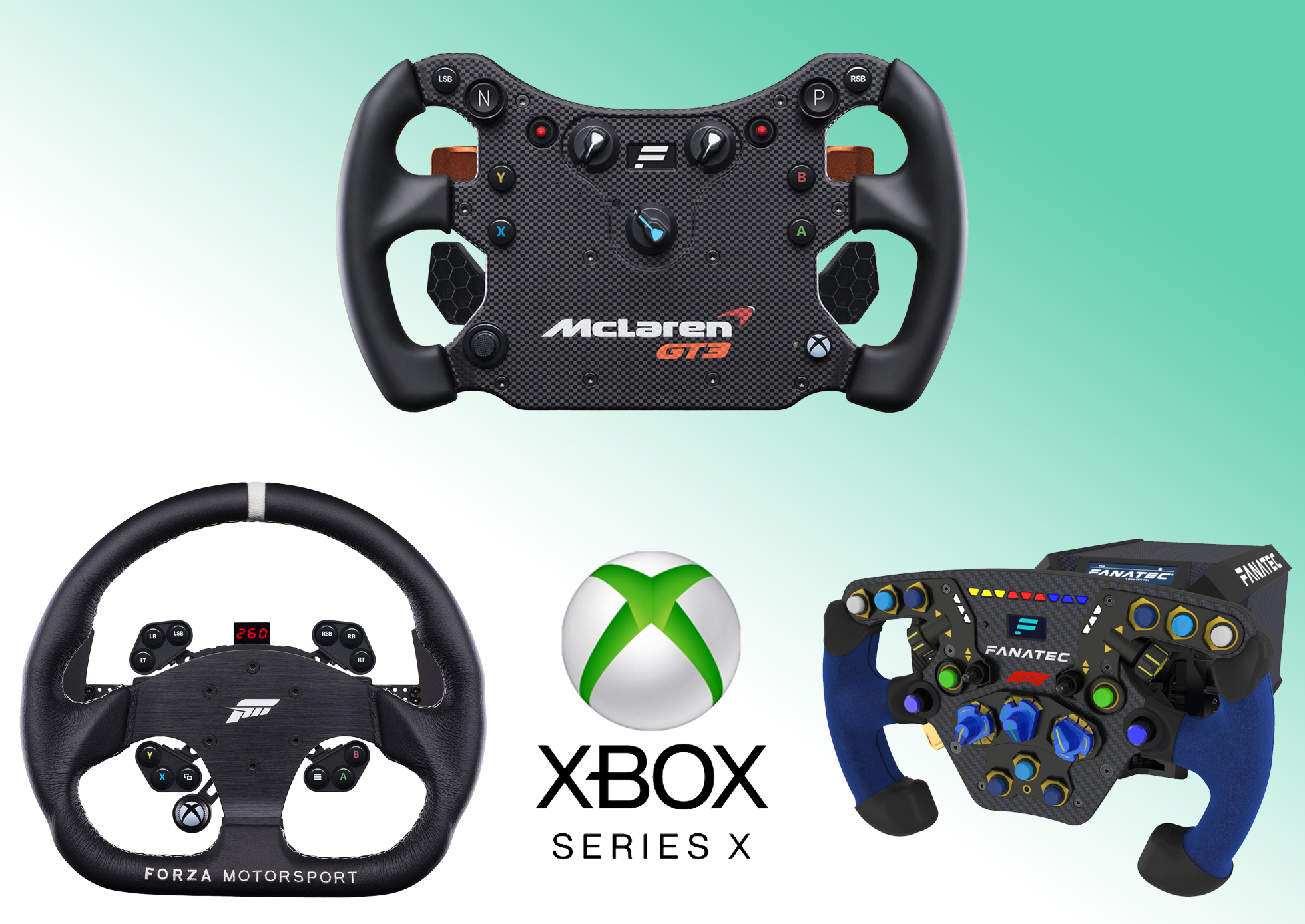
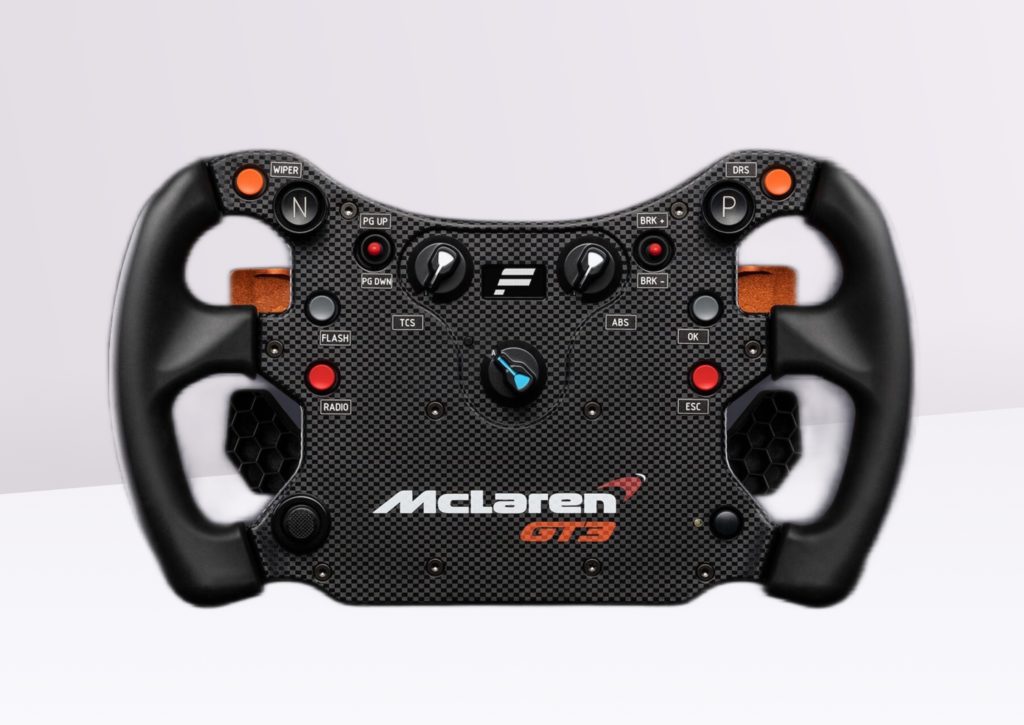
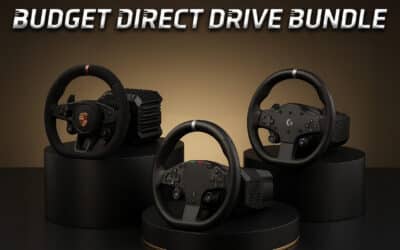
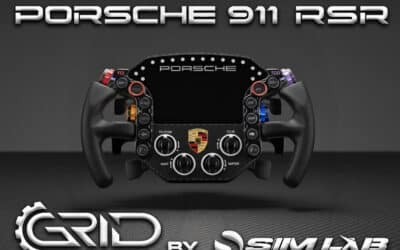
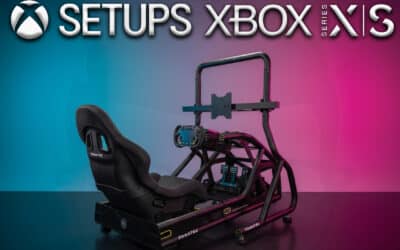



0 Comments